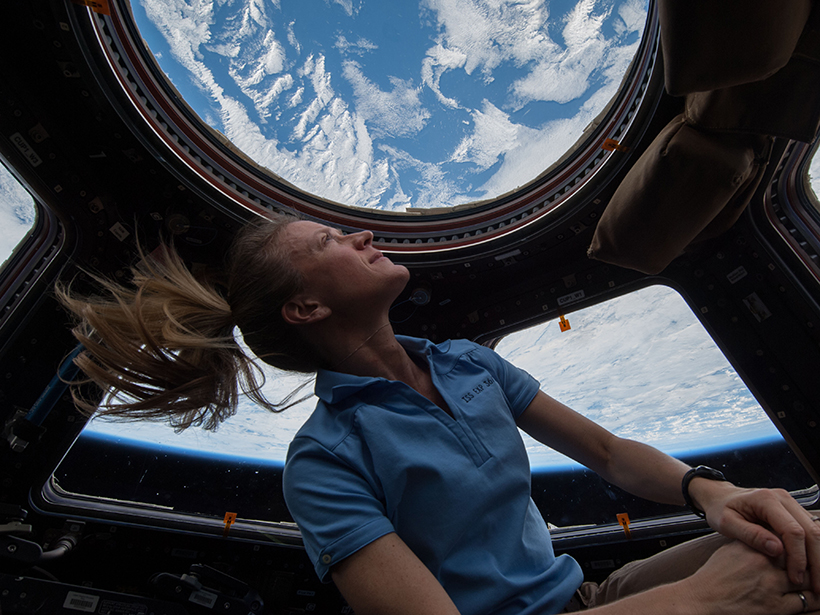A cloud of dust traces the innermost planet’s orbital path. By all accounts, it shouldn’t be there.
Jure Japelj
Jacqueline Campbell: Studying Oceans from Above
Planetary scientist studies oceans with a combination of laboratory work and satellite imagery.
Galaxy Mapper Tracks Asteroids Closer to Home
The Gaia mission’s asteroid survey will help dig deeper into the solar system’s rocky history.
Giant Planet’s Formation Caught in Action
Astronomers took a direct image of a massive protoplanet embedded in a protoplanetary disk. The system provides strong evidence for an as-yet-unconfirmed theory of planet formation.
Icy Worlds Have Mixed Ice-Rock Interiors
Scientists make a case for a more realistic treatment of icy planets’ structure in which ices and rocks are mixed instead of separated in layers.
How Much Did the Moon Heat Young Earth?
Tidal heating may have raised the surface temperature of early Earth and triggered global volcanism, a new study says.
Noble Gas Hints at Mars’s Rapid Formation
A new study finds that Mars’s mantle is neon-rich, putting constraints on the planet’s formation history.
Astronomers for Planet Earth
A volunteer network of astronomers is using a unique astronomical perspective to educate people about the climate crisis while at the same time striving for sustainability in academia.
Taking Stock of Cosmic Rays in the Solar System
Scientists seek to understand the elusive properties of stellar and galactic cosmic rays before searching for life on exoplanets.









